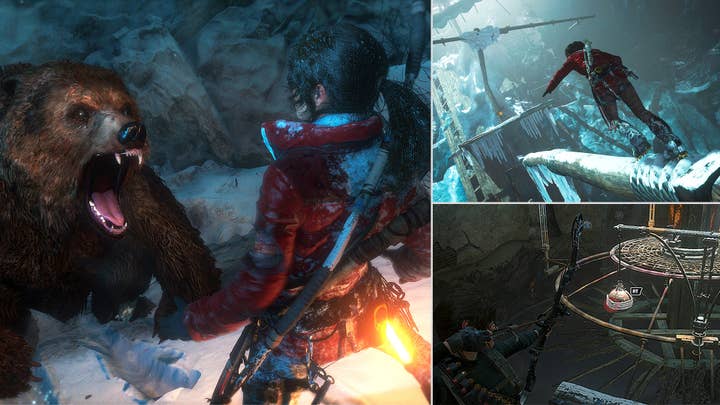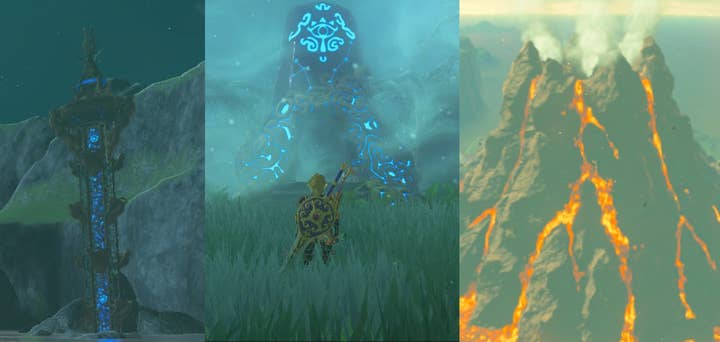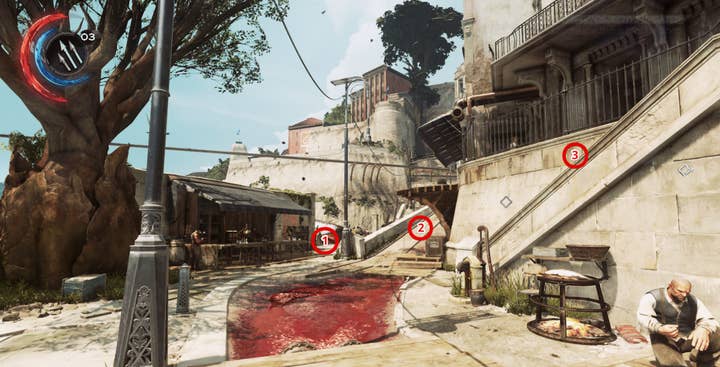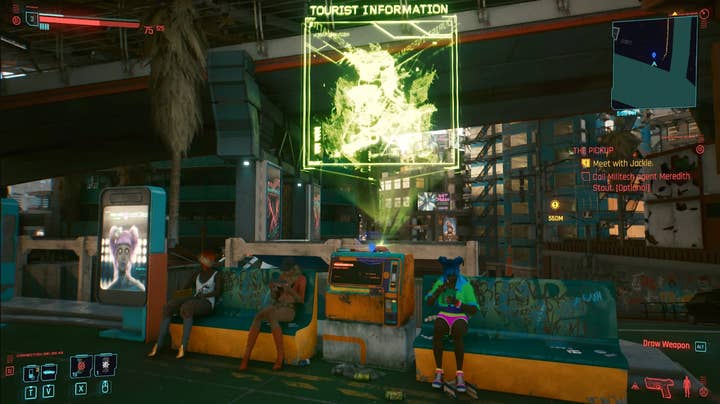How to create engaging open worlds
Vasiliy Skobelev, lead level designer at My.Games' studio Pixonic, shares his tips on how to make interesting open worlds and understand the different types of game levels
Sign up for the GI Daily here to get the biggest news straight to your inbox
Open world games have surged in popularity as immersive playgrounds that captivate players with their boundless potential for exploration and adventure. From sprawling landscapes teeming with hidden treasures to bustling cities pulsating with life, these virtual realms have become the pinnacle of modern level design.
But what makes an open world captivating? In this article, we will explore the key principles, techniques, and considerations that bring these vast digital realms to life.
A different world view
Video games can be broadly divided into three categories: linear, open world and matrix.
Linear games centre on a 'critical path', and players must navigate through all available space along that path in order to advance. These levels have clearly defined start and end points, but can still include optional content, such as dead-ends and looped spaces, provided they don't offer an equal alternative to the main path. The Callisto Protocol, Doom and 2013's Tomb Raider are all good examples of linear games.
Non-linear level gameplay is far more expensive to produce as it requires doubling, or even tripling, the gameplay options available within a given time frame. In these games, players do not follow a set path, so their experiences can vary greatly depending on how they choose to play the game. These games usually introduce multiple (seemingly equivalent) critical paths that lead to the same point (unless a game utilises a multiple ending/protagonist format). Examples can be seen in immersive simulation games that emphasise player choice, such as Deus Ex, System Shock, Dishonored, Thief, and Prey.
A matrix level structure typically consists of vast outdoor environments and the occasional indoor space, in which the critical path is not a predefined trajectory, but rather a list of coordinates a player has to visit in order to progress through the game. In this set up, it's no longer possible to direct (i.e. predict) the majority of players' experiences, so level designers must be strategic about how they distribute points of interest (POIs) across the map.
There are some basic rules to keep in mind here, for example,'never repeat the same gameplay twice in a row' (i.e. don't introduce a combat scene directly after another combat scene) and 'always design multiple entry points for each point of interest'. This means that Open World designers need to carefully consider how they implement core loops and skill checks.
Skill checks and POIs diversity rule
Video games contain a core loop, an in-game cycle of skill checks that the player goes through during a game. A skill check is an in-game challenge that asks the player to show how well they can use a mechanic they were taught earlier in the game.
Playing with this format can yield critical success – Tomb Raider's 2013 reboot is a great example. The series' traditional core loop of three types of skill check – traversal, battle, and puzzle – tended to be used in equal measure for mainline progression, but the convoluted puzzle mechanics grew stale over time.

By tweaking the format to turn the more hardcore brain teasers into optional side content, and focusing more on battles, acrobatics, and shorter puzzles, story progression was optimised, and players enjoyed more freedom and control over their experience. The game went on to become the best selling title of the Tomb Raider series, selling 11 million units and receiving an average metacritic score of 87.
Another key consideration for engaging play is the order, frequency, and setup of differing game mechanics. While ensuring immersiveness and fluidity between challenges, it's important to keep things fresh – 40 minutes of all-combat, or a physical puzzle/world that involves repetitive animation and action will bore players quickly.
Level designers must also always keep in mind the order in which a player will face certain skill checks, and in open world games this is particularly challenging, as the player themself defines the order of events. Yet after years of observation and experience, I have developed what I consider to be the key to open world success – the POIs diversity rule.


Breath of the Wild (above) demonstrates how different places of interest lead to different experiences:
- The tower on the left presents a climbing challenge with stamina management
- The foggy forest in the middle is a navigational puzzle leading to a shrine
- The volcano on the right introduces survival elements related to its hazardous environment
The POI diversity rule states: In order to maintain the quality of the core loop in an open in-game environment, a level designer should populate the horizon line with at least three POIs each offering different gameplay, no matter where the player goes.
While we can't control the order of locations the player will visit, we can control the diversity and distribution of mechanics within a specific area, keeping at least two to three POIs visible to the player, using landmarks and composition as a guide.
Sometimes you can cheat though. You can actually place similar POIs close to each other if you have a clear divider between them which will guarantee the player doesn't experience one right after the other. A good example comes from Resident Evil Village, and the village itself to be precise. While it's not a typical open world, it has the same underlying distribution logic.
But this time, the logic applies to game objects placed in the village – so working to ensure that at least two to three game objects are visible (either in the scene or mini map) to the player at any one time, but not all immediately obtainable due to environmental/constructed dividers .

Outdoor essentials
Fundamental considerations for outdoor areas of open worlds include:
- Average time between introducing a new event or point of interest. For BOTW, it's roughly 40 seconds. Were it two minutes, its vast world would feel much emptier.
- Effective attack distance. Crucial for proper implementation of battle encounters.
- Maximum line of sight. You can't just make the whole map visible from one corner to another. It wouldn't work performance-wise and would detract from the sense of exploration. Huge space dividers like mountains or dense structures exist in all open world games, because they are crucial to optimising sightlines.
- Elevation limit. It's important to understand how verticality operates in your game, and this is hampered by a lack of vertical level streaming support in modern engines. Days Gone demonstrates why this is needed: during play, zombies in the cave below you still react to your sounds and actions even when out of sight, because vertically, you're still in close proximity.
Urban spaces
General level design rules for outdoor spaces are useful but much harder to implement in spaces with lots of strict limitations, i.e. towns or cities. Here, you have to approach things slightly differently.
According to Iuliu-Cosmin Oniscu (the level designer behind Watch Dogs, Assassin's Creed and Avatar: Frontiers of Pandora), when you design a city you have to start with macro design: squares, main streets, and landmarks, as these will ultimately define the player's navigation and determine what attracts their attention.
Once these are established, you can then emphasise the main entry points to this urban space and lead the player inside. This is where navigational signifiers like leading lines, bread crumbs, framing, objects of relativity and landmarks have extremely high value.
When you get to the micro level and start working on less fundamental streets and props it's important to understand the concept of a possibility map. Put simply, this is the number of available paths and their respective weight (probability that the player will take them).

Possibility maps include critical points along the player's route, including crossroads, door frames, gates, corners, points of no return and other places where the player must make a navigational choice.
Cities in the game Titanfall almost never exceed four available paths at forks and crossroads, while other games like Dishonored lead the player along one available path before later adding in forks of two and three to allow the player to slowly get accustomed to local navigation.
To control the amount of stress a player experiences, you also need to think about the probability of a player taking each path. To ensure the main path is the most attractive, it should be clearly defined and emphasised by using features like a broad entry point, light, leading lines, or open doors.
Other optional routes leading to side content, on the other hand, should be made to appear less attractive through features like obscured entrances and curved trajectories.
The scene below from Dishonored 2, which depicts the first time a player is faced with a three-way junction in the game, demonstrates this well. The junction is deliberately placed in a low-stress environment with no time pressure, and pathways 1 and 3 are clearly less attractive than pathway 2.
This avoids any unnecessary stress and indicates to the player where they should go to progress the game and where they can choose to go to explore side content.

Negative and positive effects of fast travel
Never underestimate the impact of fast travel – it holds more importance in level design than you'd initially think. Fast travel points will almost always be among a game's most-visited areas, whether intended to be or not, solely for the convenience they provide. Design and implementation of fast travel points also fall under three general categories:
1. Flexible: In games like The Legend of Zelda: Tears of the Kingdom, Fallout 4, or Jedi: Survivor, you can move to fast travel points from anywhere at any time (provided you've acquired the necessary tools, which aren't always available from the start). This eliminates unnecessary backtracking, gives the player freedom and total travel control, and motivates deeper exploration, without concern for distance from the last city or travel point, and with the option to withdraw at any moment if needed.
2. Stationary: Games like The Witcher 3 or Cyberpunk 2077 (screenshot below) demand a player visit a fixed fast travel point in order to use it, which involves backtracking. This works well if we ensure players face random encounters and content or environment changes on the way back, however if it becomes a repetitive experience, it can become frustrating.
Stationary fast travel points create an almost radial pattern of exploration around them, and become a frequently-visited point for players, with the furthest away areas, and/or halfway mark between two travel points, less likely to be explored.
From a level design perspective, putting an advantageous item, skill-check, or plot device really far from a fast travel point – especially if the character travels on foot – means more backtracking for the player, so the journey, distance, reward, and experience all need to be carefully considered.
Stationary fast travel points can also make level design analytics harder. Did a player visit a point of interest to get back to a nearby fast travel point, or because the area itself held interest or intrigue?

3. Paid. Games like Red Dead Redemption 2 and Horizon: Forbidden West take another track, requiring players to spend resources to use fast travel. This strategy motivates players to visit special places to gather these resources, but is best used sparingly (or only if absolutely necessary), as it can quickly dampen the sense of freedom, and cause repetitive gameplay, when the player just wants to explore the world you've developed. Introducing places a player will need – but may not initially want – to visit is always a risk.
The three Cs
In his 2002 DICE Summit presentation, Mark Cerny discussed the three Cs: character, camera and control. A level design staple, the three Cs need to be in alignment for a game to work well. I've witnessed many productions where this hasn't been considered, and gameplay suffered as a result.
One of the more common mistakes is deeply developing a world map before finalising playable characters, which results in developers having to retroactively fit a character's movement mechanics to the world. Vehicle usage can be another issue – switching pace from on foot to vehicle, and vice versa, with an environment designed to suit one over the other, means the world map can stop working as intended and demands a lot of time and money to glue everything together.
So, if you are trying to bring life to a world map, always finalise the character and all the mechanics tied to it first, including all possible controls and camera springs. I can't stress enough how much money and effort it will save down the road.
Optimise mechanics and design by assembling test levels with a huge variety of gameplay setups and obstacles to fully assess the range of movement and physics. Only after your mechanics are set in stone should you start to develop levels, to let these mechanics truly shine.
Vasiliy Skobelev is lead level designer at Pixonic, a My.Games studio. He has over ten years of experience working in game development and has worked across a wide range of genres from mobile runner to AAA shooter games. His current focus is on developing the studio's latest title, War Robots: Frontiers, a spin-off of War Robots.








